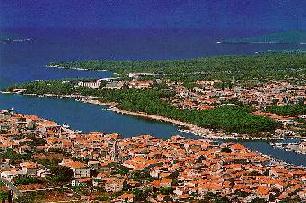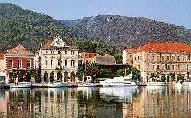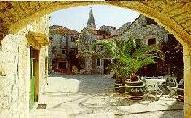The Town Of Stari Grad




The Greek town remained buried under the present day Stari Grad and only some
fragmental architectural remains indicate its original lay-out, such as some
parts of the 11 metre long Greek Walls, the so-called Cyclopean Walls, in the
Tadic-Gramatorovi wine cellar. These walls are a part of the north city wall,
while the east walls are just visible behind the church of
Sv. Ivan (St. John).
The stone blocks from the City Walls were incorporated into the
foundations of the bell tower indicates that this was the very place where
the main entrance of the town was. The inscription reads:
DEDURUNT HVIVIS PRIMORDIA MOLIS DE MOENIBUS URBIS RELIQUIAE ET DEDERAT
GRESSUM IN URBEM JANUA...
The Roman town grew up around the perimeter of the Greek one. Thus, there are two preserved Roman mosaics under the pavement in the present-day Sridnja ulica (Middle Street), and there was a Roman bath under the church of Sv. Roko.
The medieval settlement grew up north of the Greek one and by the coast on
the east. But there was nonetheless no change in the previously mentioned
political and economic stagnation of the town in the 13th century. The
architecture of the town, however, was not affected. Although the majority
of the buildings were built in the 16th and 17th centuries, i.e. the
Renaissance and baroque style are dominant in the city centre, there are
many buildings with Romanesque and Gothic traces.